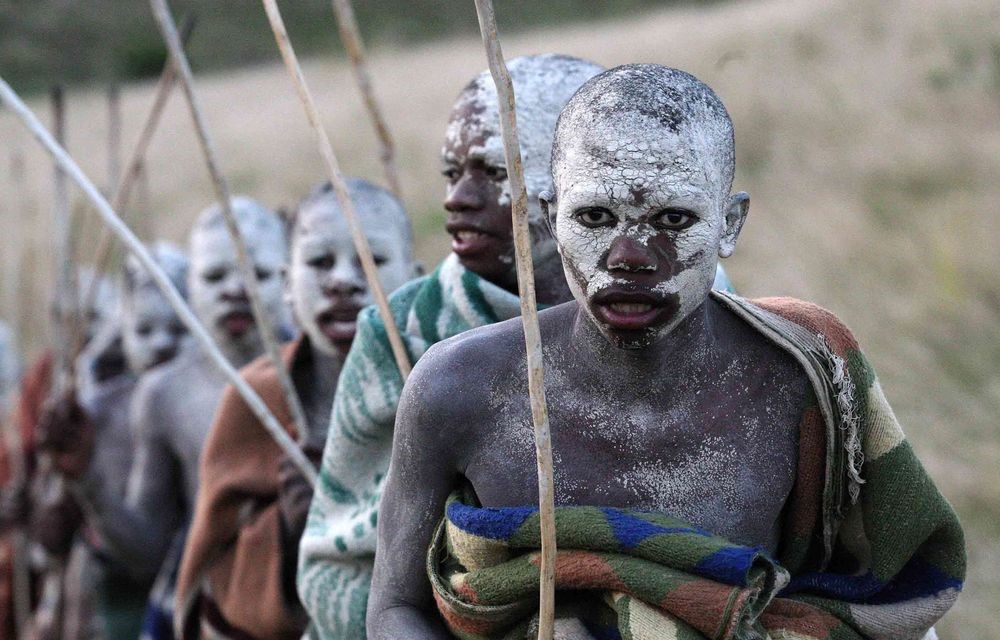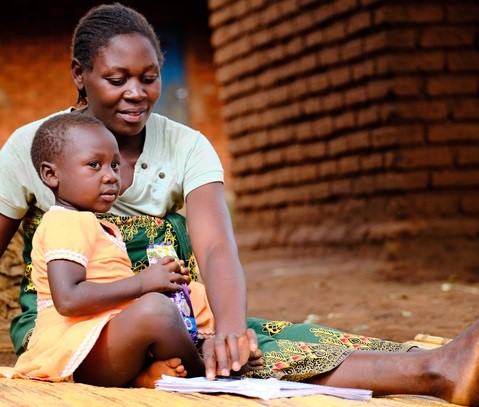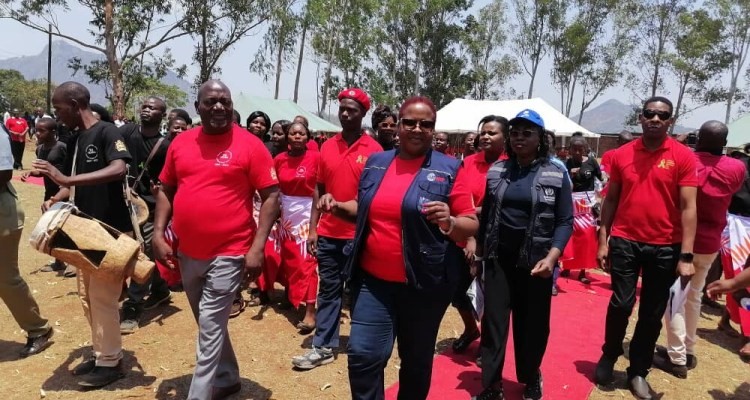by M&G

What may seem strange to one person is an everyday event for the next. To say something is “normal” or “abnormal” depends on your perception and the level of knowledge you have of the subject. In the same sense, much of that stems from the diverse cultures we grow up in.
Places around the world share similarities yet every culture is unique. African cultures, for instance, have initiation rites that can be amusing or shocking depending on your level of understanding.
African rituals, just as in other parts of the world, use symbols to express and convey meanings, verbally and nonverbally. Emphasis is put on the performance of rituals as customary, and symbolic social communication that comes with a repetitive nature according to fixed patterns. A rite of passage marks the transition to different developmental stages, these being birth, adulthood, marriage, eldership and ancestorship.
The rites are a representation of an initiation system that has provided African societies stability, consistency and intergenerational unity. The rites of passage represent a whole set of methods to preclude conflicts such as among different age groups or the ill-treatment of women, children and elders.
Ceremonies that mark the stages of life from birth to death provide clear definitions of society’s expectations of the individual, and give that person a sense of identity and belonging. These rites of passage provide valuable insights to navigating the world, how to best solve social conflicts and contradictions and give the individual the societal support to discover and fulfil their life mission and unique contribution.
Rites of prenatal rituals and birth
Pregnancy is an indicator of a new addition to the family and society. For this reason, birth rituals start with the pregnant woman. As explained by Chukwu and Ume (2020), the joy of a woman expecting a baby “knows no bound as she cheerfully sings and dance harmoniously, swerving her body mass tenderly from the right to the left unknown to her that her songs have enchanted neighbours”. In many cultures, pregnant women observe different rituals or taboos that aim to protect the mother of the child from perceived evil.
The Baganda of Uganda design banana leaf waistbands for the expectant mother. Both the male and female banana leaves are used in readiness for either sex of the baby.
The rite of birth involves initiating the infant into the world through a ritual and naming ceremony. In the Basotho culture, women give birth with the help of female birth attendants. Research tells us that traditionally relatives and friends soaked the father with water when his first born child was a girl. If it was a boy the father was beaten with a stick. The rationale and philosophy of this is that Basotho linked a male child to warfare, and the child is kept separate from the mother in a clearly marked hut for two to three months. The seclusion can be temporarily broken when the baby is brought outside to be introduced to the first rain.
Many African cultures believe that the infant comes from the spirit world with critical information and is bringing with them unique talents and gifts to offer to the family and social group. The infant is therefore believed to be in the world to accomplish a specific mission, and has a great message to deliver.
It is then the responsibility of the family and group to identify the infant’s unique mission through consultations with a diviner, perform rituals and have a birth chart. This is done to understand the new member’s mission so that they can be correctly guided through their life journey. The infant’s name is given after the mission has been determined and also to reflect the infant’s personality or the life mission itself.
Rite of adulthood
The rite of adulthood is the second major initiation ritual and is nowadays the most common among the set of rites. Many Africans presently assume that rites of passage refers only to initiation into adulthood.
The Agikuyu of Kenya are organised around the age-set system (marika), and male and female initiation rites (irua) play a central social role. These involve prolonged and intensive puberty rituals that culminate with male and female circumcision.
The Luguru of Eastern Tanzania youth are initiated into adulthood. For boys, the rituals involve isolation in a forest where they receive secret instructions as a group on a range of issues, including sexual intercourse, personal hygiene, politeness. For girls, the initiation requires living in isolation in a dark room for several months.
Adulthood rites are usually done at the onset of puberty (around 12 to 13 years of age in many cultures) and they are to ensure the shaping of productive, community-oriented responsible adults. This transition to adulthood is difficult in Western societies because there are no adulthood rites to guide and direct the young person through this important stage of their life.
African societies often take the young initiates out of the community away from the concerns of everyday life to teach them the ways of adulthood. These include the rules and taboos of the society, moral instruction, social responsibility and further clarification of their mission or calling in life.
Smit and Cronje (1997), in their explanation of leadership styles of managers, propose that leadership is a process of directing the behaviour of others towards the accomplishment of certain objectives. They further explain that leadership involves elements such as influencing people, giving orders, motivating people either as individuals or as groups, managing conflict and communicating with subordinates.
According to records, Moshoeshoe killed three boys for milking his cow without his permission. His grandfather Peete, witnessing the aggression of his grandson, decided to take him to Morena Mohlomi, a man regarded as the Socrates of Africa.
When a Xhosa reaches 18, he is circumcised, an act that is seen as a transition from boyhood to manhood. Young men are mentored by elders in the bush. This ritual is meant to prepare them for life, leadership and being custodians of their culture.
Other rites of passage include eldership and ancestorship and also play a role in grooming exceptional leaders.
Mohlomi, in his teachings to Moshoeshoe, emphasised the importance of leading with love, having an in-depth understanding of the needs of the people he led so that he would make well-informed decisions.
In the context of the current leadership in Africa, would one assume that more African rites of passage need to be performed for every incoming leader, or do we leave it as is?
















